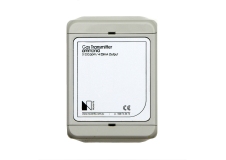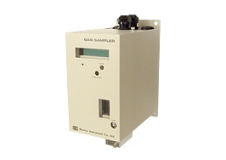Ammonia Detection
Ammonia, also known as NH3 or Ammonium hydroxide, is a colourless gas with a distinct odour composed of nitrogen and hydrogen atoms. It is produced naturally in the human body and in nature - in water, soil and air, even in tiny bacteria molecules. Ammonia is highly toxic and flammable; it reacts violently with water and can cause serious damage to skin, eyes, and the respiratory system. Ammonia's odour provides adequate early warning of its presence, but ammonia also causes olfactory fatigue or adaptation, reducing awareness of one's prolonged exposure at low concentrations.
Ammonia applications
Ammonia as refrigerant is one of the most efficient applications. With the ever increasing focus on energy consumption, ammonia systems are a safe and sustainable choice for the future. Typically a flooded ammonia system would be approx. 20% more efficient than for instance R404A. Recent developments of NH3 and CO2 combination contributed to increase the efficiency further. NH3/CO2 cascaded is extremely efficient for low and very low temperature applications.
When released to the atmosphere, does not contribute to ozone depletion and global warming. New technology and equipment is leading to low and reduced ammonia charge designs. The application of these new low charge systems and packages creates an opportunity to use ammonia systems in a broad range of industrial, commercial and indirect space conditioning applications that would not have been considered with traditional designs.
Ammonia is a toxic refrigerant, and it is also flammable at certain concentrations. That is why it has to be handled with care, and all ammonia systems have to be designed with safety in mind. Always consider some sort of gas detection to be installed alongside any ammonia refrigerant plant. In case it is necessary to reduce ammonia charge, combination of ammonia and CO2 (as cascade or as brine) could be a good and efficient option.
Other applications
Ammonia is a common solvent used in cleaning products and can be an ingredient in food products. However, the majority of Ammonia is used in direct applications for fertilizer production - fertilizer generated from ammonia is responsible for sustaining one-third of the Earth’s population.
Detection Options
While Ammonia’s distinctive smell makes it relatively easy to initially identify, real-time gas monitors are necessary to allow continuous protection from exposure to ammonia emissions. Noventis offers multiple solutions for ammonia gas detection. The Microsense Ammonia (NH3) is a single gas safe area ammonia gas detector that meets the requirements for economic and reliable monitoring of gas levels in a wide range of environments and applications. Browse our range of fixed gas detection meters we can offer for your application.
Gas Specifications
- Gas Name: Ammonia
- Formula: NH3
- CAS No.: 7664-41-7
- TWA: 25 ppm
- LEL: 15 %VOL
- Density relative to air: 0.59


